
Business Traveller brings you the definitive guide to how airlines are deploying their Airbus A380 superjumbo aircraft. (We also have guides to the Boeing B787 Dreamliner and Airbus A350).
A total of 13 carriers currently operate the A380 (listed in order of when they first took delivery of the aircraft).
- Singapore Airlines – also see Singapore Airlines A380: What you need to know
- Emirates – also see Emirates A380: What you need to know
- Qantas – also see Qantas A380: What you need to know
- Air France – also see Air France A380: What you need to know
- Lufthansa – also see Lufthansa A380: What you need to know
- Korean Air – also see Korean Air A380: What you need to know
- China Southern Airlines – also see China Southern A380: What you need to know
- Malaysia Airlines – also see Malaysia Airlines A380: What you need to know
- Thai Airways – also see Thai Airways A380: What you need to know
- British Airways – also see British Airways A380: What you need to know
- Asiana Airlines
- Qatar Airways
- Etihad Airways

Etihad Airways
Etihad Airways was the last carrier to launch the superjumbo, taking delivery of its first A380 in December 2014.
The carrier operates ten superjumbos, all of which feature the luxury Residence by Etihad three-room suite, with a living room, ensuite shower room, bedroom and dedicated butler, and nine First Apartments, each featuring a reclining lounge chair and an ottoman which opens up to become a separate 80.5-inch fully-flat bed.
The aircraft is also configured with 70 business class seats and 417 in economy.
In June 2017 the carrier moved to an all-A380 operation on its Abu Dhabi-New York JFK route.
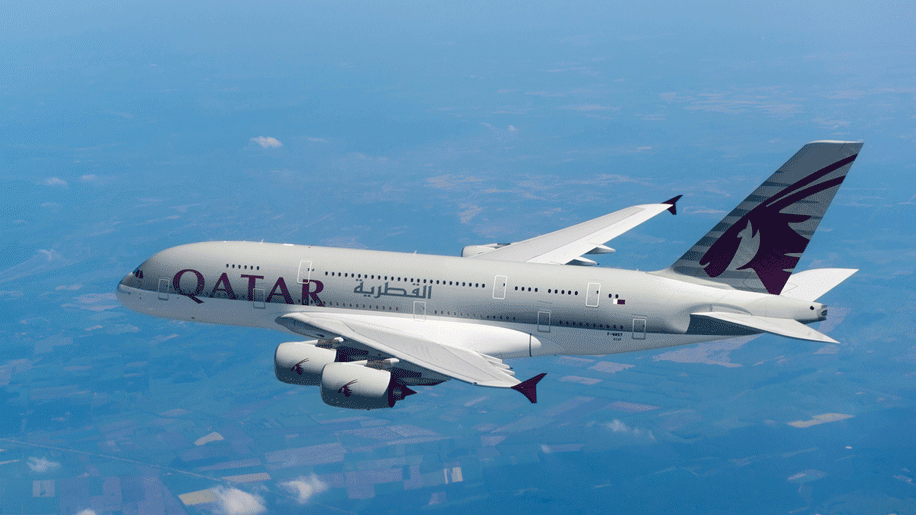
Qatar Airways
Fellow Gulf carrier Qatar Airways also took delivery of its first A380 in 2014. The airline has eight superjumbos in its fleet, configured with eight first class suites, 48 in business and 461 in economy, for a total of 517 seats.

Asiana
Asiana took delivery of its first superjumbo in March 2014, and has six A380s in service.
Its superjumbos are configured in a three-class layout, seating 495 passengers in 12 private First Suites, 66 fully-flat seats in Business Smartium (business class) and 417 seats in Travel Class (economy).

British Airways
British Airways was the tenth carrier to take delivery of an Airbus A380 in July 2013, the first of 12 superjumbos it now has in service.
A second A380 was delivered in August 2013, and BA launched superjumbo services to Los Angeles on September 24 of that year – for Tried and Tested reviews of this aircraft, click on the links below:
- British Airways A380 First (London Heathrow to Los Angeles)
- British Airways A380 Club World (Los Angeles to London Heathrow)
BA’s A380 layout features 14 seats in First on the main deck, followed by 44 Club World seats in a 2-4-2 configuration, then 199 World Traveller economy seats in a 3-4-3 layout.
The upper deck features a further 53 Club World seats in a new 2-3-2 layout, followed by 55 World Traveller Plus seats also configured 2-3-2, and then 104 World Traveller seats in a 2-4-2 layout.
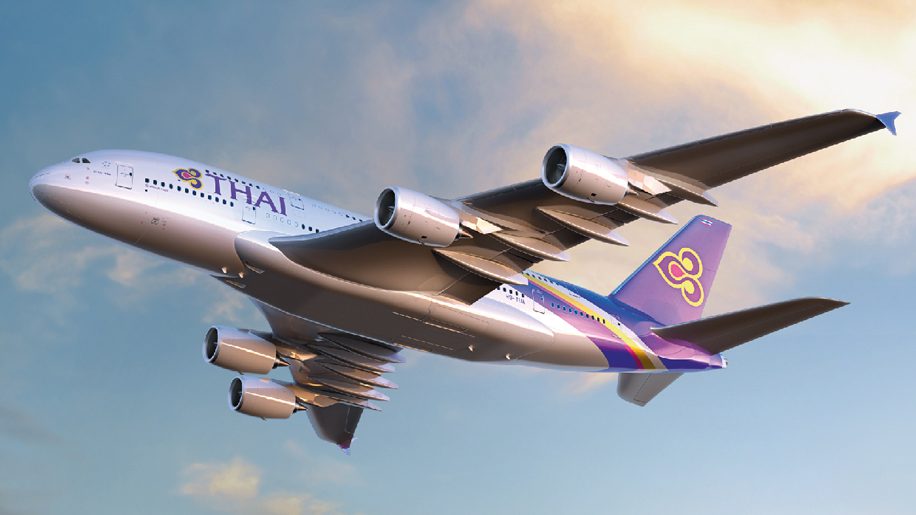
Thai Airways
Thai Airways received its first A380 in September 2012. It now has six superjumbos in its fleet.
The carrier’s inaugural A380 entered service between Bangkok and Hong Kong. The airline now also flies A380s to Singapore, Frankfurt, Narita and Paris.
Its superjumbos have 507 seats and are configured with 12 seats in Royal First Class, 60 in Royal Silk business class and 435 in economy.
First and business class cabins feature fully-flat beds, and all passengers benefit from AVOD in-flight entertainment systems, individual power sources, and wifi internet and mobile phone access.
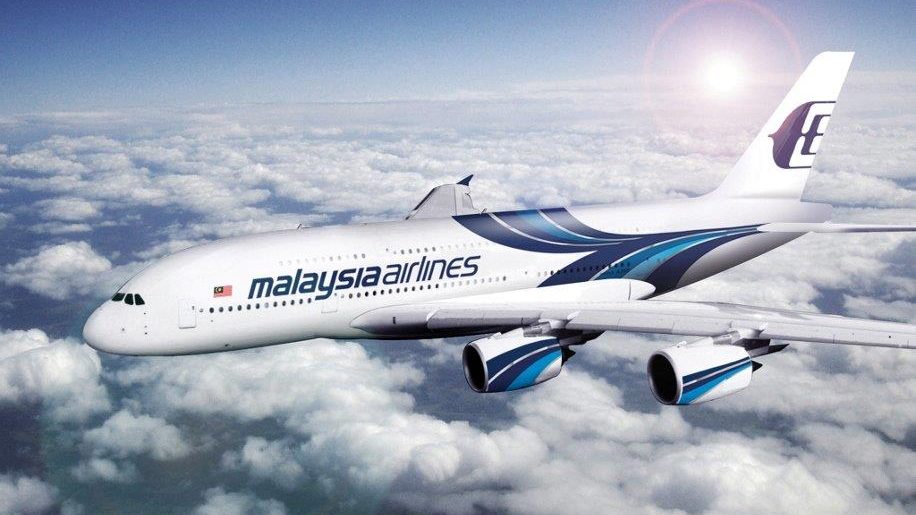
Malaysia Airlines
Malaysia Airlines took delivery of its first superjumbo at the end of May 2012, before putting it into service on the flagship London-Kuala Lumpur service that July.
Malaysia Airlines ordered a total of six A380 aircraft, all of which have now been delivered.
It operates the double-decker on three routes from Kuala Lumpur – double daily to London Heathrow, and a daily service to Hong Kong and Paris Charles de Gaulle.
However the carrier’s outgoing CEO Peter Bellew confirmed in 2017 that MAS is to move its fleet of A380s into a separate company from summer 2018, which will use them for Hajj and Umraa pilgrimage flights, as well as leasing them out to other operators.

China Southern
China Southern became the first Chinese carrier to take delivery of an A380 aircraft in autumn 2011.
It now has five superjumbos, but operates them mainly on domestic routes – Beijing, Shanghai and Hong Kong – out of Guangzhou due to a dispute with Air China over flying the A380s from the latter’s Beijing home.
As a result, China Southern has lost money on its A380s and only flies to one international destination, Los Angeles, although it has subsequently announced plans to fly the aircraft to Sydney.
The carrier configures its superjumbos in a three-class layout, featuring eight first class seats, 70 business class seats and 428 economy seats.
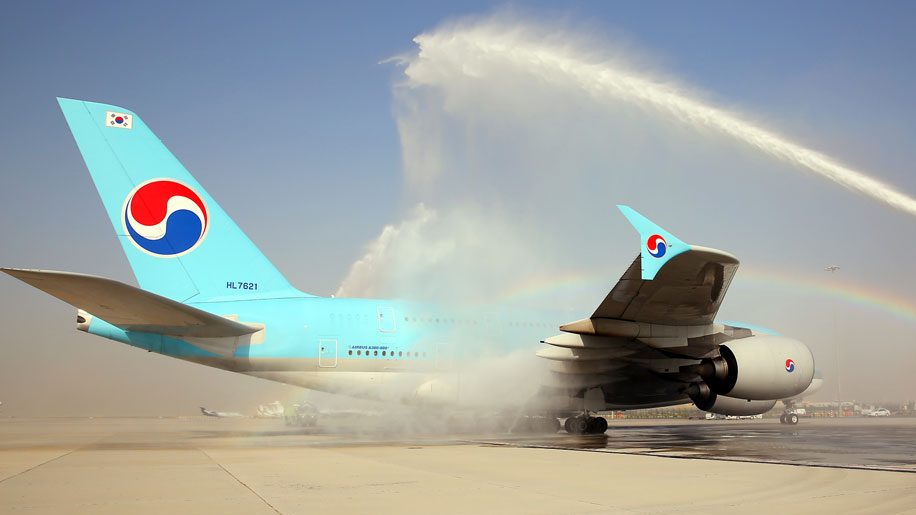
Korean Air
South Korea’s flag carrier Korean Air took delivery of its first A380 in May 2011 and, the following month, put the aircraft into service on routes from Seoul to Tokyo and Hong Kong.
The carrier was the first airline to dedicate the entire upper deck of the aircraft to business class, with 94 Prestige sleeper seats in a 2-2-2 configuration. However, SIA has subsequently also launched a second A380 configuration with an all-business class upper deck on its new A380 deliveries.
The upper deck of the Korean Air superjumbo features an onboard bar and lounge area for business and first class passengers, with smart blue and white seating, a flatscreen TV and bar area.
The lower deck features 12 first class and 301 economy seats, making a total of 407 on board the aircraft, the lowest number of seats for any A380 operator so far. SIA will offer 409 seats with its new A380 configuration.
The carrier added the A380 to its Heathrow-Seoul Incheon route on March 27, 2016.
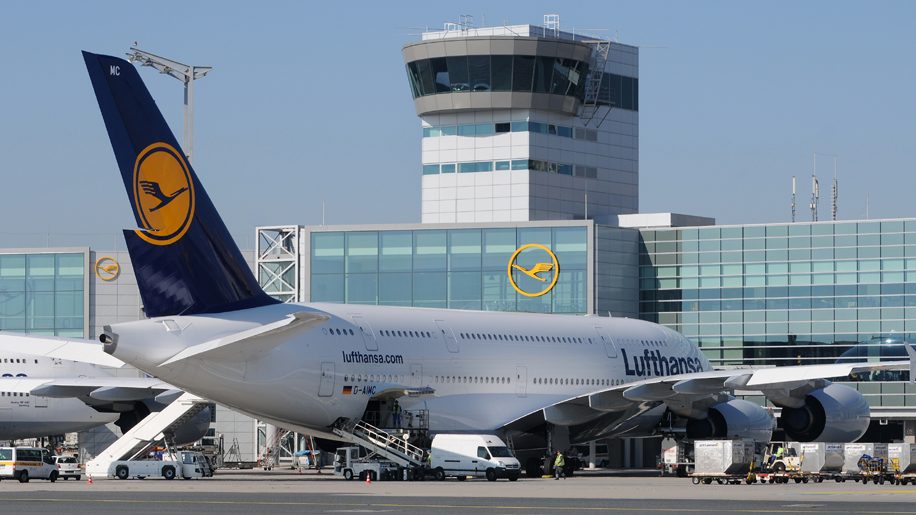
Lufthansa
Lufthansa has 14 A380s in its fleet after officially joining the superjumbo club in May 2010, launching its maiden scheduled flight from Frankfurt to Tokyo the following month.
The German carrier deploys its A380s between Frankfurt and destinations including – Houston, Johannesburg, San Francisco, Tokyo, Beijing and Singapore and Shanghai.
Each aircraft is in a three-class configuration accommodating 526 passengers. On the upper deck, there are eight First Class seats in the front cabin in a 1-2-1 layout, followed by two cabins containing 98 Business seats in 2-2-2.
Economy occupies the entirety of the main lower deck and seats 420 across four cabins in a 3-4-3 configuration. Only Emirates has a larger number of economy seats, with 427.
Seats in First and Business are equipped with AC power ports while economy seats come with USB ports and iPhone chargers.
Each bed in First measures 207cm in length, and 80cm wide and has an adjustable privacy screen. Meanwhile, “sound-absorbing carpets” eliminate the noise of footsteps and the lighting system automatically adjusts to the time of day. Business seats are lie-flat with a slight downward slope.

Air France
Air France took delivery of its first A380 in October 2009, becoming the first European carrier to add the superjumbo to its fleet.
In November that year, it launched its maiden A380 passenger flight from Paris Charles De Gaulle to New York.
AF now has ten A380s in its fleet, and flies the aircraft to destinations including Johannesburg, Los Angeles, New York, Singapore, Shanghai, Tokyo and Washington DC.
The 516-seat aircraft houses nine first class (premiere) passengers, 80 in business (affaires), 38 in premium economy (premium voyageur) and 389 in economy (voyageur).
First class is on the lower deck in a 1-2-1 configuration; business is in two cabins on the upper deck in 2-2-2; premium economy is on the upper deck in 2-3-2; and economy has 46 seats on the upper deck and 343 on the lower deck, mostly 3-4-3.

Qantas
In September 2008, Qantas became the third airline to receive the A380 and now has 12 of the superjumbos in its fleet – a further eight that were on order have since been postponed indefinitely.
It deployed its first A380 on its daily Melbourne to Los Angeles route in October 2008. Qantas now also flies the A380 between Sydney and Hong Kong, between Melbourne and London via Dubai, between Sydney and Los Angeles, between Sydney and London via Dubai.
Until July 2013, the airline operated the superjumbo in two configurations – the first, now withdrawn, seated 450 and had four cabins with 14 first class suites, 72 business class seats, 32 in premium economy and 332 in economy.
Qantas was the first airline to include a premium economy cabin on an A380.
The second, and now only, configuration seats 484. Fourteen first class seats are located on the main lower deck at the front of the aircraft in a 1-1-1 layout. Behind that, there are 341 economy seats split across three cabins and mostly configured 3-4-3.
A further 30 economy seats are located at the back of the upper deck. In front of this area is premium economy, with 35 seats in a 2-3-2 configuration.
The rest of the upper deck is made up of two business class cabins, both configured 2-2-2 and seatign a total of 64 passengers. The first cabin has three rows and the second has seven with two further pairs of seats on each side at the front.
There is also a self-service bar area and, right at the front, a lounge area with sofa seating for five people.
The carrier recently announced plans to overhaul its A380 cabins, increasing business and premium economy seating while removing some seats in economy class in response to “increased customer demand for premium cabins” on Asia, Europe and US flights.
The new cabins will begin being refitted in the second quarter of 2019, with all 12 of the airline’s A380s expected to feature the new layout by the end of 2020.
The plan will see 30 of the A380s economy class seats removed to make way for six additional business class and 25 premium economy seats. Of particular note is the replacing of the airline’s Skybeds in business class with its new Business Suites, which each have direct aisle access and “better use of cabin space compared with the Skybed”.
Premium economy, meanwhile, will be laid out 2-3-2 and will be the airline’s new product which is set to debut on the carrier’s B787 Dreamliners.
The upper deck will also be reconfigured to allow for a redesigned passenger lounge and more room for first and business class passengers. The lower-deck first class will retain its current configuration of 14 suites in a 1-1-1 layout. First class will, however, be among the first classes to see some of the upgrade with memory foam mattresses and a pillow menu being rolled out later this year.
Overall, the new layout will comprise 14 First Suites, 70 Business Suites, 60 premium economy and 341 economy seats. In-flight wifi, of which the carrier has been running trials this year, is expected to be available on the new-layout superjumbos.

Emirates
The airline most committed to the Airbus superjumbo – by far – is Emirates, having recently taken delivery of its 100th A380, out of a total of 142 on order.
The Gulf carrier unveiled its first, long-awaited A380 in July 2008 and flew its debut flight to New York the following month.
Now the airline flies the superjumbo to over 40 destinations including London Heathrow, Los Angeles Rome, Moscow, Hong Kong, Bangkok and Auckland.
Emirates operates its A380s in three configurations. The first has 489 seats 14 in First Class, 76 in Business and 399 in Economy.
The second, denser configuration is deployed on long-haul flights. It has 517 seats, with 14 in First, 76 in Business and 427 in Economy.
In both these configurations, First and Business are on the upper deck, while economy is on the main lower deck.
On the upper deck is the Onboard Lounge, where First and Business passengers can enjoy a drink. All of the airline’s A380s are fitted with wifi.
Emirates also operates an all-economy A380 configuration, with 625 seats across the two decks.
In January 2013, Emirates opened Concourse A, the dedicated home of its A380 fleet and the world’s first purpose-built facility for the aircraft at Dubai International.
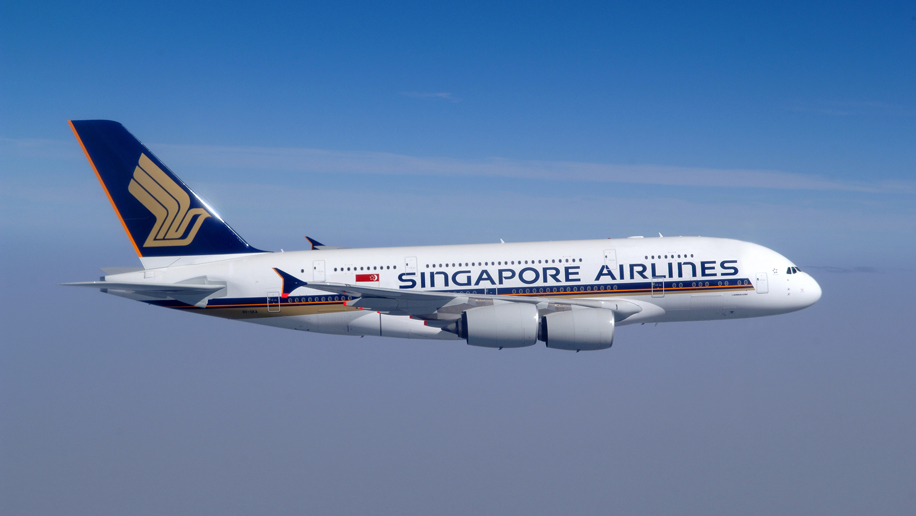
Singapore Airlines
Back in October 2007, Singapore Airlines was the launch customer of the A380, launching the jet’s first passenger service between Singapore and Sydney.
The airline, which remains the second largest superjumbo customer after Emirates, has 19 of the superjumbos in its fleet (although one is currently in storage), with five more on order which will replace the oldest aircraft.
SIA operates its A380s on double daily flights to Heathrow and Sydney and daily flights to Tokyo Narita, Paris CDG, Hong Kong, Zurich, Melbourne and Los Angeles, as an extension of its Narita service.
It also deploys the A380 on its Singapore-Frankfurt-New York JFK and Singapore-Hong Kong-San Francisco routes between December 28 and March 31 — the rest of the year the routes are served by a B777-300ER.
SIAs A380s seat between 379 and 471 passengers depending on the configuration.
When seating 471, the aircraft’s lower deck has 12 first class suites – designed by French luxury yacht designer Jean-Jacques Coste – in a 1-2-1 layout and 311 economy seats in 3-4-3. The upper deck has 60 business class seats in 1-2-1 and 88 economy in 2-4-2.
The airline’s newer 409-seat configuration is the same, apart from the upper deck is all business class, seating 86, while the 379-seat layout has an all-business class upper deck.
The carrier recently announced plans to refit its A380s with new suites, business, premium economy and economy class seating, in a move which will also see the aircraft’s seat density increased.
Suites have been relocated to the upper deck of the aircraft, and reduced in number to six suites in order to offer additional space and exclusivity. Configured in three rows of 1-1 the suites feature a leather swivel chair and separate 76-inch bed, as well as 32-inch TV screen, and a separate tablet on a side table.
Configured 1-2-1 and located behind first class on the upper deck, business class seats retain the carrier’s distinctive off-centre bed position, and offer a width of 25 inches, pitch or 50 inches, and bed length of 78 inches. They also feature a new space below the seat which can accommodate standard carry-on luggage.
Premium economy is located at the front of the lower deck , with seats configured 2-4-2 and offering eight inches of recline, a pitch of 38 inches and a width of 19.5 inches, with features including two USB ports and in-seat power.
Finally economy is configured 3-4-3 on the lower deck, and offer 32 inches of pitch, a recline of six inches and a width of 18.5 inches, with a headrest which can be adjusted in six different ways with foldable wings.
SIA has five new A380s on order that will sport the new seating. These will replace the carrier’s five oldest superjumbos, which it is returning to its lessor, keeping the total number of A380s in its fleet at 19. The remaining 14 will begin being retrofitted with the new seats starting late next year, with the entire fleet of aircraft expected to be outfitted with these seat products by 2020.
Which deck and what class?
As detailed above, the carriers disagree on the best place for their first class cabins, with Emirates, Lufthansa and Thai Airways opting for the upper deck, and Qantas, SIA, Air France, Korean Air, China Southern, Malaysia Airlines and BA all choosing to locate their most premium seats on the lower deck.
It should also be noted that both Emirates and SIA have more than one configuration for their A380 aircraft.
In the case of Emirates, the carrier has a 489-seat layout which includes a crew rest area at the back of the economy cabin, necessary for its longest flights served by the superjumbo, whereas routes to the UK, for instance, use A380s without this crew area, meaning there are an additional 28 economy seats in the cabin.
In terms of economy, Korean Air has the fewest seats at 301, followed by BA at 303, SIA’s recent configuration at 311.
Qantas, Air France and BA are the only three A380 carriers to offer a premium economy cabin.
Emirates’ A380s, which are configured without the crew rest area, have the largest economy offering at 427 seats, followed by the Lufthansa aircraft at 420 (all on the lower deck).
Air France has the most seats overall at 538, some 131 seats more than the Korean Air 407-seat layout. But all of the current capacities will pale into insignificance compared to the 840-seat layout which had been planned by Air Austral (see online news, January 2009), although that order has since been cancelled.
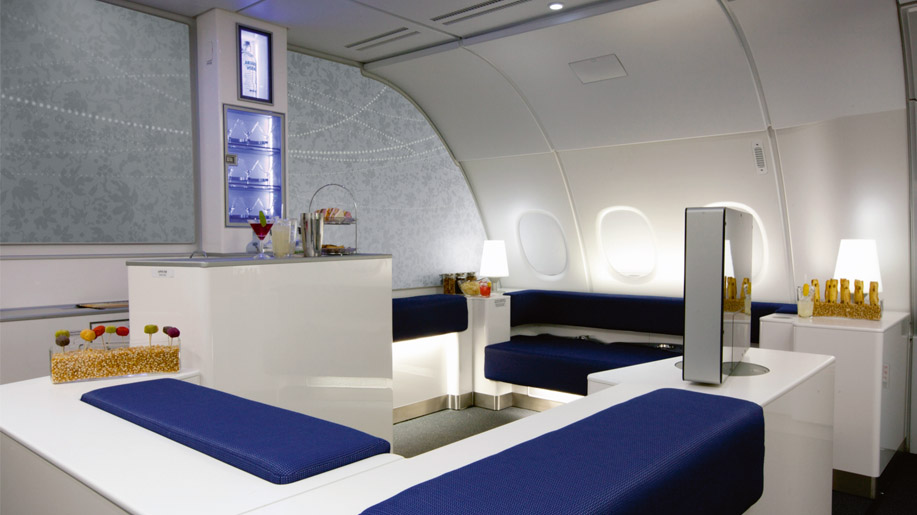
Cabin innovation
Korean Air offers an inflight Duty Free “showcase” at the back of the lower deck, occupying a space equivalent to 13 economy seats.
It’s not the first time that an A380 operator has opted to use some of its precious onboard space for something other than seating – Emirates has showers in its first class cabins, while Qantas has a lounge area for its premium passengers located at the front of the upper deck, Air France has a digital gallery also at the front of the upper deck, and Singapore Airlines famously offers double beds in first class.
Having two full passenger decks has given A380 operators plenty of scope in terms of aircraft configuration. The only constants are the presence of an economy cabin on the lower deck (albeit in some cases in conjunction with a smaller economy cabin on the upper deck), and almost all airlines have opted to place business class on the upper deck.
However, British Airways has bucked this trend by splitting its Club World cabin between the upper and lower decks.
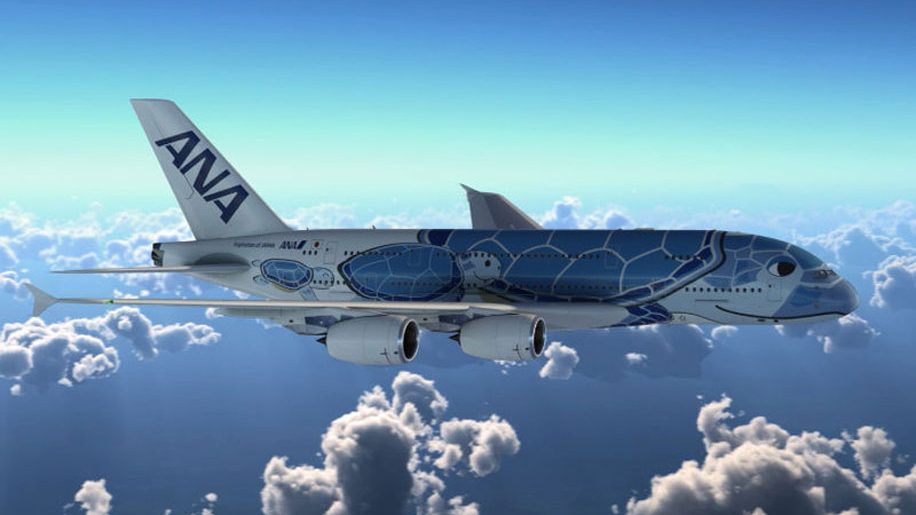
Forthcoming A380 operators
Virgin Atlantic and Japanese carrier ANA both have outstanding orders for the superjumbo, although Virgin’s deliveries have been deferred indefinitely.
ANA will take delivery of the first of three superjumbos in 2018, featuring a special sea turtle design which was chosen from over 2,000 submissions received in an open competition organized by the carrier.
Useful links
Businesstraveller.com and seatplans.com have a wealth of information on the airlines currently operating A380 aircraft, from images and videos, to seatplans and flight reviews.
Here are just a few links for each A380 carrier which you may find useful – for a full list of all A380 articles published by Business Traveller, including new routes and product information, click here.
For a table showing the seating layouts on the lower and upper decks and across all classes for each A380 operator, click here.
Air France
- The lowdown
- Three-class seatplan
- Four-class seatplan
- Video of Air France A380 clipping a Delta aircraft at JFK
- Seatplans Air France A380 user-generated flight reviews
British Airways
China Southern
Emirates
- The lowdown
- The seatplan
- Business class Tried and Tested review
- First class Tried and Tested review
- Seatplans Emirates A380 user-generated flight reviews
- Emirates A380 struck by lightning
Korean Air
Lufthansa
Malaysia Airlines
- MAS plans A380 services to London and Amsterdam
- MAS to ban babies in A380 first class
- MAS receives first A380 superjumbo
- MAS launches A380 on London route
- Tried and Tested: MAS A380 business class
Singapore Airlines












